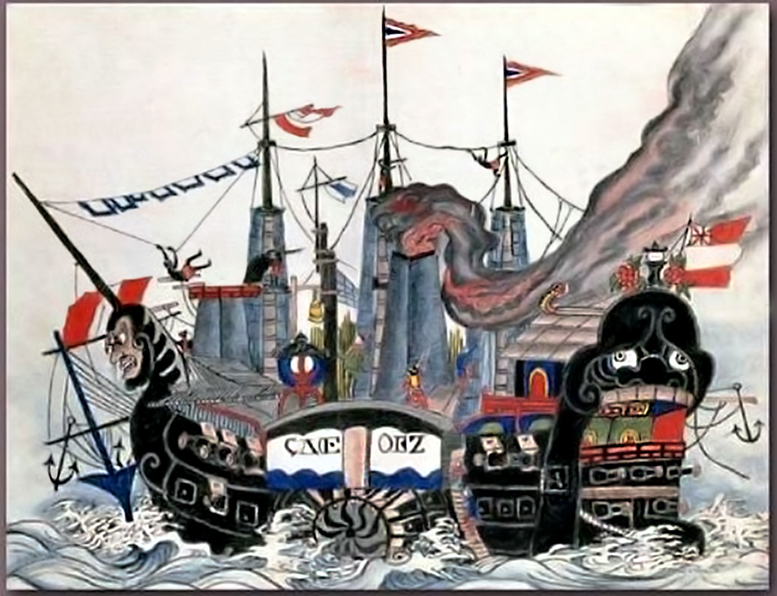Visual Source 19.1
The Black Ships
The initial occasion for serious Japanese reflection on the West occurred in 1853–1854, in the context of American commodore Matthew Perry’s efforts to “open” Japan to regular commercial relationships with the United States. His nine coal-fired steamships, belching black smoke and carrying a crew of some 1,800 men and more than 100 mounted cannons, became known in Japan as the “black ships.” Visual Source 19.1, created around 1854, represents perhaps the best known of many such Japanese depictions of the American warships.
Beyond portraying the American warships, Japanese artists sought to depict their inhabitants, especially Commodore Perry and his top aides. Some Japanese men rowed their small boats out to the black ships, hoping to catch a glimpse of Perry himself. But the commodore remained largely inaccessible, and the Japanese called his secluded on-board cabin “The Abode of His High and Mighty Mysteriousness.” This image of Perry, together with his second-in-command, is one of many portrayals of the commodore. They are shown here as a particular kind of goblin, known as tengu, that have long noses and are viewed as dangerous, demonic, and warlike. His creased and hairy face likewise conveys a sense of otherness compared to the smooth and hairless faces of respected Japanese figures.

Question
What general impression of the American intrusion did the artist seek to convey?
Question
What specific features of the image help the artist make his case?
Question
Why might the artist have chosen to depict the gunfire coming from the American ship as streams of light?